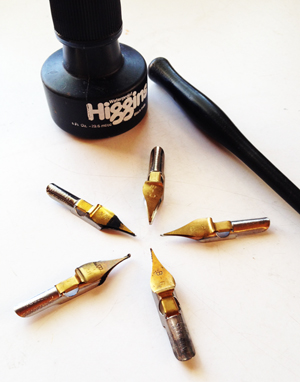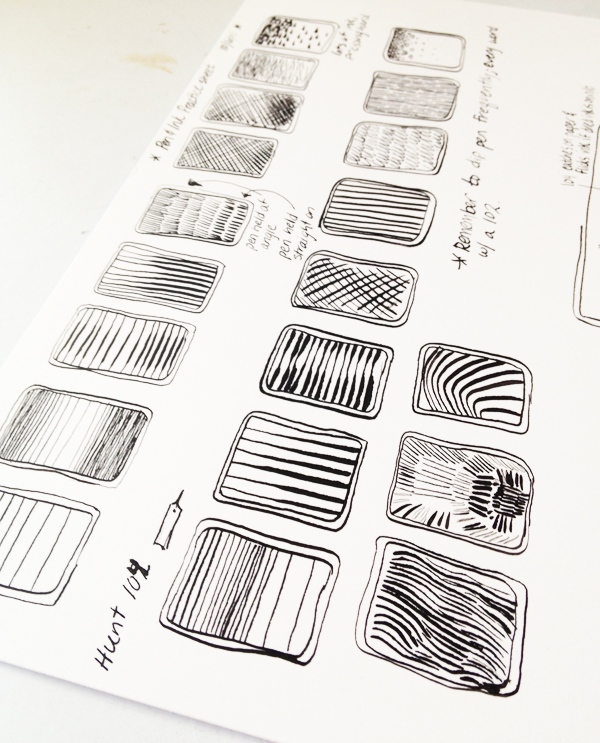
When I was in college taking science illustration courses, I was introduced to pen and ink. [And when I say “pen and ink,” I do not mean normal, run-of-the-mill pens; I am talking about pens with nibs that you dip into an inkwell (really old school!)]. My initial reaction upon introduction to the pen nib and ink well made me think about the Declaration of Independence. Once I started clogging up the ends of my nibs and dripping large blots of ink everywhere, I realized what a feat creating an error-free document truly was.
The goal of using this new medium was to test multiple pen nibs to create different sized lines and alternating stroke widths in each line. This is useful when you would like an illustration that has an interesting line, with a hand-drawn feel, yet is concise and interesting.
After I tired from my explorations of ink blobs and the new curse-words I invented during this process, my professor recommended I create a sample sheet of lines. How boring, I thought to myself. A sheet of lines? Ugh! But after I started, I realized that this indeed was a great exercise that was far from dull. It inspired me to see how many different strokes or lines I could create.
I created hatchmarks from different nibs, with different pressures, different strokes, different directions, etc. The result is this sheet that I can use as a reference point for future inking projects.

